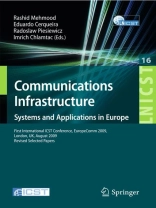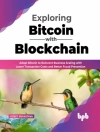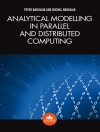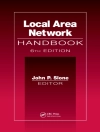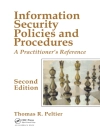The First International ICST Conference on Communications Infrastructure, Systems and Applications in Europe (Europe Comm 2009) was held August 11–13, 2009, in London. Europe Comm 2009 brought together decision makers from the EU comm- sion, top researchers and industry executives to discuss the directions of communi- tions research and development in Europe. The event also attracted academia and industry representatives, as well as government officials to discuss the current dev- opments and future trends in technology, applications and services in the communi- tions field. Organizing this conference was motivated by the fact that the development and – ployment of future services will require a common global-scale infrastructure, and therefore it is important that designers and stakeholders from all the systems stacks come together to discuss these developments. Rapidly decreasing costs of compu- tional power, storage capacity, and communication bandwidth have led to the dev- opment of a multitude of applications carrying an increasingly huge amount of traffic on the global networking infrastructure. What we have seen is an evolution: an inf- structure looking for networked applications has evolved into an infrastructure str- gling to meet the social, technological and business challenges posed by the plethora of bandwidth-hungry emerging applications.
Spis treści
Emerging Infrastructure and Technologies I.- Building Digital Economy – The Research Councils Programme and the Vision.- Why the Internet Is So ‘Small’?.- Reactive Management of Quality of Service in Multimedia OBS Networks Based on GMPLS.- Enhancing Java RMI with Asynchrony through Reflection.- SNR Based Digital Estimation of Security in Wireless Sensor Networks.- Quantifying the TV White Spaces Spectrum Opportunity for Cognitive Radio Access.- Emerging Infrastructure and Technologies II.- MIMO Free-Space Optical Communication Employing Subcarrier Intensity Modulation in Atmospheric Turbulence Channels.- RSVP-TE Based Impairments Collection Mechanism in DWDM Network.- MIMO-OFDM System’s Performance Using LDPC Codes for a Mobile Robot.- Hybrid M-QAM with Adaptive Modulation and Selection Combining in MIMO Systems.- Performance Analysis of a Joint Space-Time Block Codes and Channel Estimation Scheme in DL-PUSC Mode of Mobile Wi MAX.- Intelligent Transportation Systems (ITS).- The Changing Transport Datascape – Opportunities and Challenges.- Intelligent Control of Urban Road Networks: Algorithms, Systems and Communications.- Congestion Reduction Using Ad-Hoc Message Dissemination in Vehicular Networks.- Intelligent Mobility Systems: Some Socio-technical Challenges and Opportunities.- i Ride: A Cooperative Sensor and IP Multimedia Subsystem Based Architecture and Application for ITS Road Safety.- DVB-T/H Portable and Mobile TV Performance in the New Channel Profiles Modes.- Localization to Enhance Security and Services in Wi-Fi Networks under Privacy Constraints.- A Proportional Fairness with Bandwidth-Borrowing Scheme for a Two-Tier NEMO System.- Intelligent Healthcare Systems (IHS).- Healthcare Information Systems – Requirements and Vision.- The Impact of e Health on the Quality and Safety of Healthcare.- e-Labs and Work Objects: Towards Digital Health Economies.- Mandatory and Location-Aware Access Control for Relational Databases.- The Interaction of Production and Consumption in the News Media Social Space.- Optimization of TCP/IP over 802.11 Wireless Networks in Home Environment.- Analysis of the Contextual Behaviour of Mobile Subscribers.- Work-in-Progress and Short Papers.- Improved Classification and Framework Association of Security Vulnerability, Threats and Attacks in Wireless Sensor Networks.- Challenges for Mobile Social Networking Applications.- Mobile Monitoring Stations and Web Visualization of Biotelemetric System – Guardian II.- Practical Issues of Wireless Mobile Devices Usage with Downlink Optimization.- Reliable Communications Using Multi-layer Transmission.- Effects of the Distinction between Long and Short Data Grants in DOCSIS Network.
